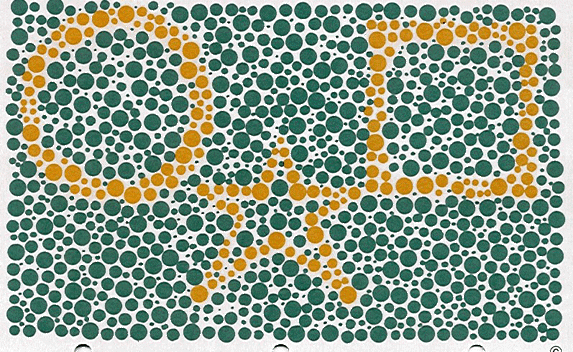
This article was last updated on April 16, 2022
Canada: ![]() Oye! Times readers Get FREE $30 to spend on Amazon, Walmart…
Oye! Times readers Get FREE $30 to spend on Amazon, Walmart…
USA: ![]() Oye! Times readers Get FREE $30 to spend on Amazon, Walmart…
Oye! Times readers Get FREE $30 to spend on Amazon, Walmart…
A child with Color Vision Deficiency may have difficulties when his or her perceptions clash with normal color perceptions. No medical treatment can cure the Color Vision Deficiency, but greater awareness of the condition can minimize any difficulties.
Disadvantages and an Advantage
Color blindness also excludes people from numerous professions. Some obvious examples include employment as police officers, fire fighters, commercial/public transit drivers, and pilots. In other professions the requirement is not as obvious, and some people spend years training for careers as designers, geologists, chemists, or ophthalmologists before being excluded by their color blindness. Color-coding is used extensively in education and children can be mistakenly labeled as learning-disabled before it is discovered that they have a color vision deficiency.
Traffic lights generally look different to people with Color Vision Deficiency. Most drivers with the condition rely on the position of the lights and rarely have problems.
There may be an advantage to having Color Vision Deficiency. Because of their practice at detecting subtle differences in shading, affected individuals may be able to detect camouflage more easily than people with normal color vision. An animal surrounded by vegetation or a camouflage net might be in plain view to their practiced eyes.
Use the test below to find out if you are colorblind or not!

{moshide hidden Show answer!|Hide Answer!}
Answer: Everyone should be able to see a circle, star, and square in the demonstration plate.{/moshide}

{moshide hidden Show answer!|Hide Answer!}
Answer: Colorblind individuals should see the yellow square. Color normal individuals should see the yellow square and a “faint” brown circle.
{/moshide}

{moshide hidden Show answer!|Hide Answer!}
Answer: Colorblind individuals should see the yellow circle. Color normal individuals should see the yellow circle and a “faint” brown square.
{/moshide}

{moshide hidden Show answer!|Hide Answer!}
Answer: Colorblind individuals should see nothing. Color normal individuals should see a “faint” brown boat.
{/moshide}
Please leave a comment if you did the above colorblindness test and what was the result.

Be the first to comment